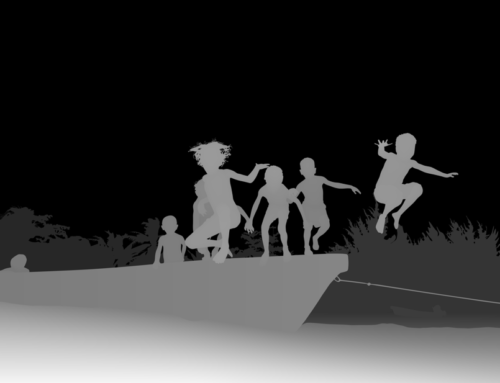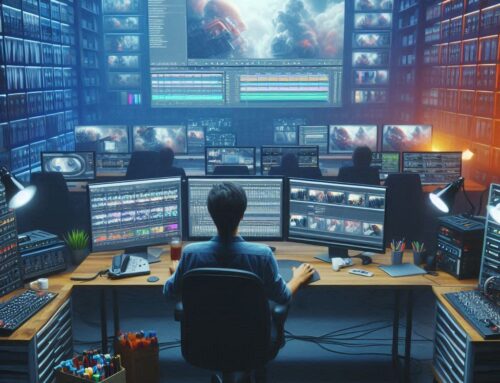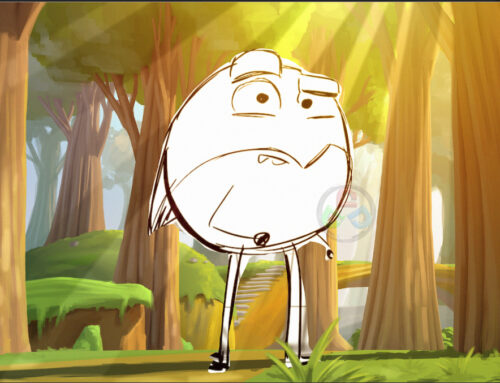What is Rotoscoping? – Rotoscoping is an animation technique that animators use to trace over motion picture footage, frame by frame, to produce realistic action. Originally, live-action movie images were projected onto a glass panel and traced onto paper. This projection equipment is referred to as a rotoscope, developed by Austrian-American animator Max Fleischer. This device was eventually replaced by computers, but the process is still called rotoscoping.
Rotoscoping can be used to create a variety of effects, from realistic animation to stylized art. It can also be used to create special effects, such as the lightsabers in the Star Wars films.
Here are some of the advantages of rotoscoping:
- It can be used to create realistic animation that looks like live-action.
- This can be used to create special effects that would be difficult or impossible to achieve with traditional animation.
- It can be used to create stylized art that has a unique look and feel.
Here are some of the disadvantages of rotoscoping:
- It can be time-consuming and labor-intensive.
- Second, It can be difficult to get the tracing to be perfect, which can lead to a choppy or unnatural animation.
- It can be difficult to add creative elements to the animation, such as original character designs or backgrounds.
Rotoscoping is still widely used today, and it is often used in combination with other animation techniques, such as 2D and 3D animation. It is a versatile technique that can be used to create a variety of different effects.
Here are some examples of films that use rotoscoping:
- The Thief and the Cobbler (1993)
- A Scanner Darkly (2006)
- Waking Life (2001)
- Spider-Man: Into the Spider-Verse (2018)
- Loving Vincent (2017)
At 3D Services India, we understand the ever-evolving world of animation and visual effects. Rotoscoping, often referred to as ‘roto,’ is a pivotal animation technique that holds the power to breathe life into your creative projects. In this comprehensive guide, we delve into everything you need to know about rotoscoping and how it can elevate your animation and visual effects endeavors.
What is Rotoscoping and Origin of Rotoscope
Rotoscoping, as we know it today, finds its roots in the ingenious mind of animator Max Fleischer, who introduced this technique back in 1915. The fundamental concept of rotoscope involves the meticulous process of tracing over live-action footage frame by frame. This meticulous approach results in the creation of graphic assets that can seamlessly blend into both animated and live-action productions, offering fluid and lifelike motions.
Fleischer’s groundbreaking innovation transformed the animation landscape. Instead of manually drawing every frame, roto enabled animators to expedite the animation process. Max Fleischer’s iconic creation, “Koko the Clown,” was the first-ever rotoscoped cartoon character, setting the stage for the animation industry’s future.
Diverse Applications of Rotoscoping
Over the years, rotoscoping has evolved and diversified, finding application in various facets of filmmaking and animation. Here are some of the key roles and examples of rotoscoping in the film industry:
Visual Effects Mastery
Rotoscoping serves as a cornerstone in the world of visual effects. It empowers filmmakers to create intricate matte or masks for specific elements within a scene. For instance, roto can extract characters or objects from one scene and seamlessly integrate them into a different background. This technique also facilitates the alteration of colors and numerous other visual effects enhancements. Rotoscoping, thus, grants filmmakers the ability to bring to life scenes that might be challenging, expensive, or impossible to achieve otherwise.
An iconic example of visual effects rotoscoping is seen in the original 1977 “Star Wars: Episode IV – A New Hope.” This technique was instrumental in creating the iconic lightsaber, giving it a laser-like appearance. The subsequent Star Wars films continued to utilize rotoscoping to enhance their visual effects, such as matting AT-ATs on the forest planet of Endor in “Return of the Jedi” and integrating Princess Leia seamlessly into new scenes in “The Rise of Skywalker.”
Rotoscoping for Reference
Walt Disney took a unique approach when incorporating rotoscoping into his studio’s animation projects. Instead of tracing over live-action footage, Disney utilized it as a reference for character movement. This approach is evident in classic Disney films like “Snow White and the Seven Dwarfs,” where dance sequences and Prince Charming’s movements were rotoscoped from live-action references. Disney even recycled certain scenes from past animations to create “Robin Hood” in 1973, optimizing the efficiency of rotoscoping.
Partial Rotoscoping – Art Meets Realism
Many animators and VFX teams have embraced rotoscoping, often adapting it to their unique artistic styles. For instance, when rotoscoping human-like animations, artists may combine tracings from live-action footage with caricature, emphasizing the distinct proportions between animated characters and real-life humans. This amalgamation ensures convincing movement while maintaining the chosen drawing style.
The Rotoscoping Process
Now that we’ve explored the diverse applications of rotoscoping, let’s dive into the essential steps involved in the rotoscoping process:
1. Shoot and Analyze the Reference Film
Before commencing rotoscoping, it is crucial to have a clear vision of your project. Identify the elements you intend to apply the technique to, such as props or individuals. Capture footage or sequences that minimize complexity, utilizing minimal costumes, props, and sets for ease of tracing. Ensure the footage encompasses the elements you wish to rotoscope and take note of any changes in direction or potential obstructions.
2. Select the Right Tools and Software
The choice of software plays a pivotal role in the rotoscoping process. Various software options cater to different project requirements and personal preferences. Consider software like Adobe After Effects, Adobe Photoshop, Fusion 9, Silhouette FX, Imagineer’s Mocha, Nuke by Foundry, Autodesk Combustion, Blender, among others. Opt for the one that aligns with your project’s demands.
3. Trace the Reference Film
Once you’ve chosen your preferred software, align the footage and begin tracing the desired movements or expressions. If you’re using Adobe Photoshop, create a video timeline, set the appropriate frame rate, and insert your video footage. Create a new blank video layer to serve as your rotoscoped animation canvas. While tracing, use control points judiciously, ensuring each frame is as accurate as possible. For complex shapes, consider separating movable body parts to maintain animation accuracy.
4. Add Finishing Touches and Enhancements
After tracing, leverage your software’s tools to enhance the animation further. In Adobe Photoshop, consider creating a new blank video layer for color fill, masking, warping, and blending. Experiment with textures and background elements to breathe life into your rotoscoped creation. For visual effects rotoscoping in Adobe After Effects, explore additional masks and tools to refine the animation.
Conclusion
Rotoscoping, a technique with a century-old legacy, continues to thrive in the world of animation and visual effects. Its enduring relevance underscores its efficacy in bringing creativity to life on screen. Whether you’re a seasoned professional or a budding artist, honing your rotoscoping skills can open doors to new possibilities.
As you embark on your journey into the fascinating realm of animation and visual effects, consider exploring the offerings of 3D Services India. Our expertise and commitment to excellence make us your ideal partner in transforming creative visions into captivating realities. Explore the potential of rotoscoping and witness your projects reach new heights of artistic brilliance.
Inquire about our services today and take the first step towards unlocking the boundless potential of animation and visual effects with 3D Services India.



